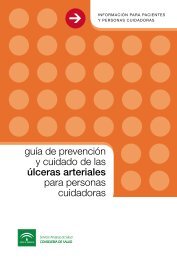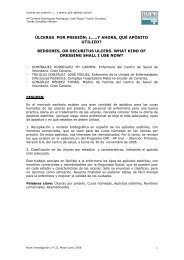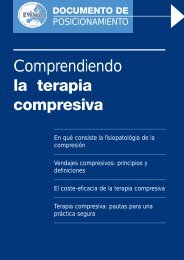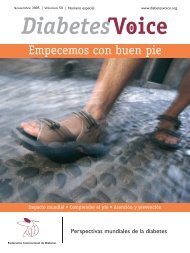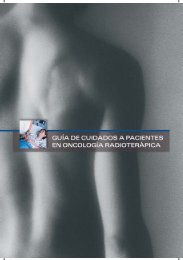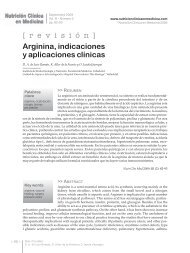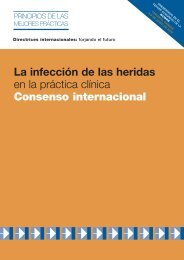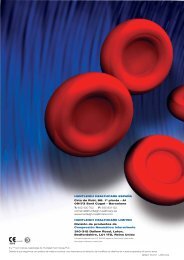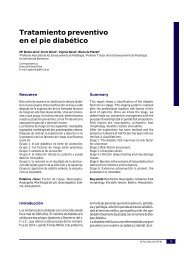HUNTLEIGH HEALTHCARE LIMITED Pressure Area Care Products ...
HUNTLEIGH HEALTHCARE LIMITED Pressure Area Care Products ...
HUNTLEIGH HEALTHCARE LIMITED Pressure Area Care Products ...
Create successful ePaper yourself
Turn your PDF publications into a flip-book with our unique Google optimized e-Paper software.
ecent studies have demonstrated increased flow rates at<br />
low pressures for both healthy subjects 28, 29 and those with<br />
impaired neuro-vascular response 30 . Figure 11 shows how<br />
the blood flow was affected by contact pressure.<br />
The use of alternating surfaces has also been shown to be<br />
important in the promotion of reactive hyperaemia and is<br />
often cited as a key benefit of the surfaces. Reactive<br />
hyperaemia is a normal physiological response to pressure<br />
relief and is the process by which the body increases<br />
blood flow to tissues that have temporarily been deprived<br />
of oxygen, so as to restore the natural balance 6 , this<br />
should not be confused with non-reactive hyperaemia<br />
which is a grade 1 ulcer.<br />
Figure 11 – The effect of contact pressure on<br />
blood flow in a human forearm<br />
The clinical implications of using alternating surfaces are measurable. A comparison of<br />
alternating systems with “equivalent” static (pressure reducing) systems in an Intensive<br />
<strong>Care</strong> Unit, showed a significant reduction in the development of pressure ulcers on<br />
patients nursed on alternating surfaces 31 .<br />
How PRI is Measured<br />
The <strong>Pressure</strong> Relief Index can be used as an assessment<br />
tool to measure the performance of alternating surfaces<br />
such as mattresses and cushions. Interface pressure (the<br />
pressure existing between the support surface and the<br />
test subject) is recorded using a single sensor (e.g. an<br />
Oxford <strong>Pressure</strong> Monitor) which is attached to a computer.<br />
As shown in Fig 12, the sensor is secured over a bony<br />
prominence; typically, the heel, sacrum, ischial tuberosities<br />
and trochanter. Tests can then be performed in the<br />
supine, side lying or sitting positions.<br />
PRI refers to the percentage of time (threshold) for one<br />
complete cycle of an alternating surface, that the interface<br />
pressure is below a predefined pressure. The predefined<br />
pressures used in mattress assessments are:<br />
Figure 12 – The pressure sensor attached to<br />
the heel and a graph of the results<br />
30 mmHg – relating to the average blood pressure at the<br />
arteriolar end of the microcirculation.<br />
20 mmHg – relating to the average blood pressure in the capillary loops.<br />
10 mmHg – relating to the average blood pressure in the venules.<br />
These pressures relate approximately to the closing pressures of blood vessels at heart<br />
level as measured by E.M Landis (1930) 7 . The interface pressures exerted by a seating<br />
surface are higher due to the smaller contact area, and blood pressure is also higher<br />
since a column of blood exists between the heart and the buttocks. So the defined<br />
pressures used for PRI measurement are set higher; 60 mmHg, 40 mmHg and 20 mmHg.<br />
7





